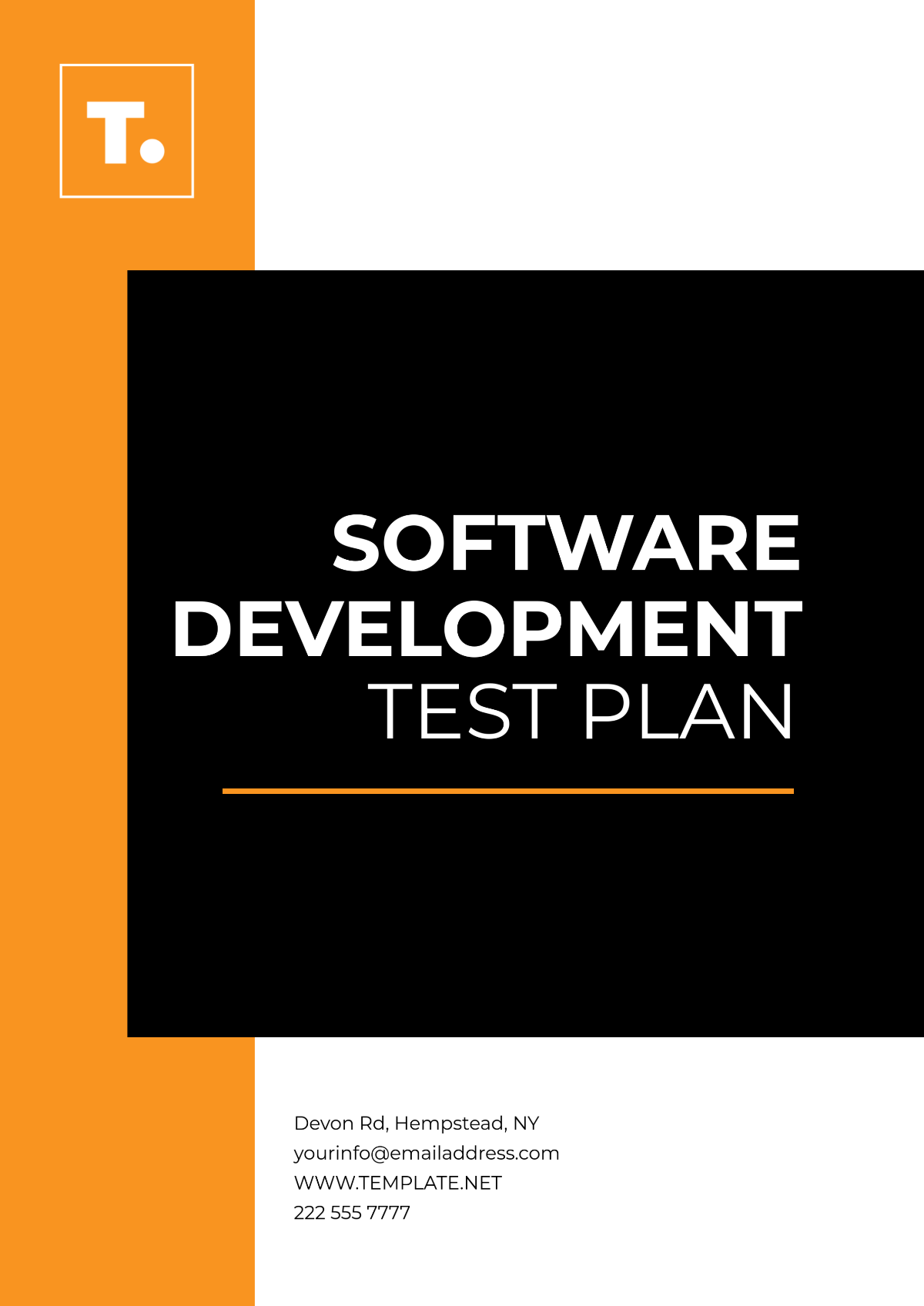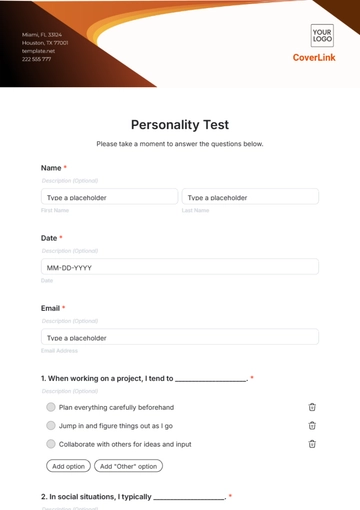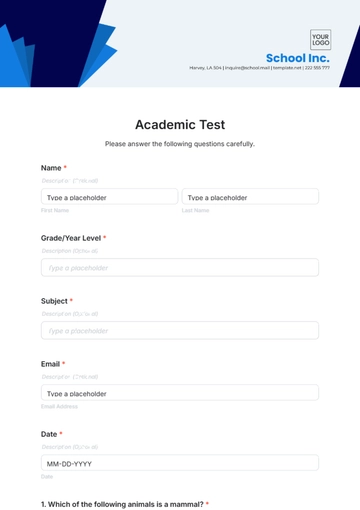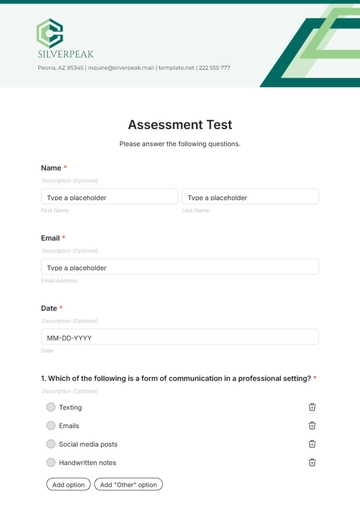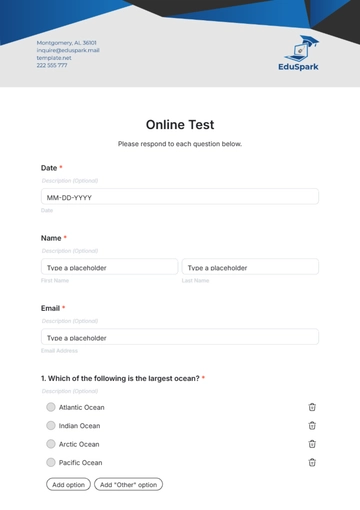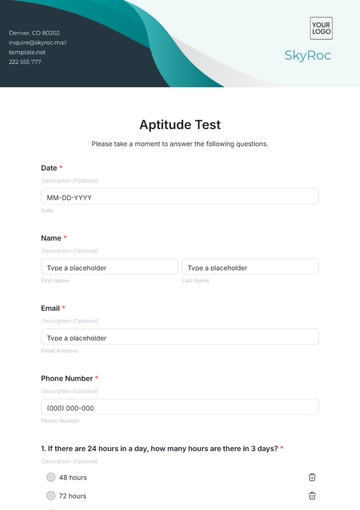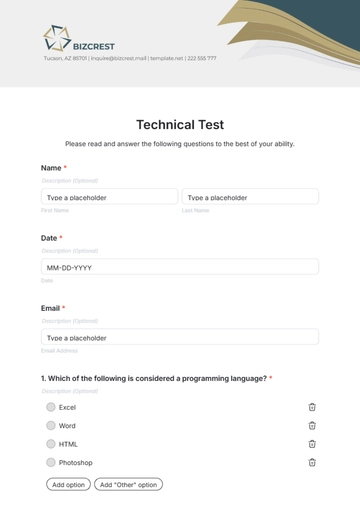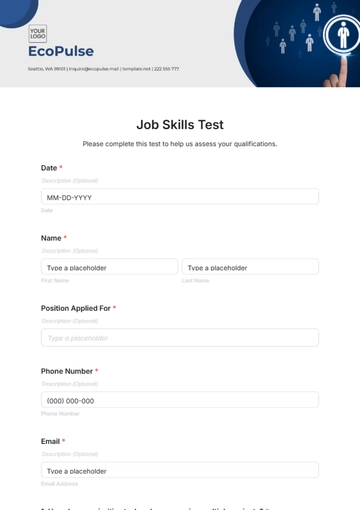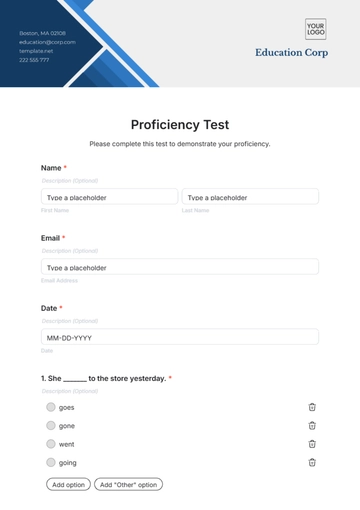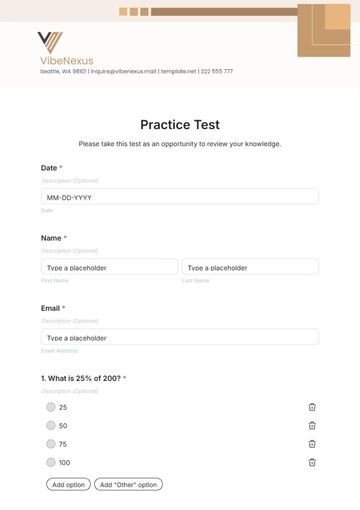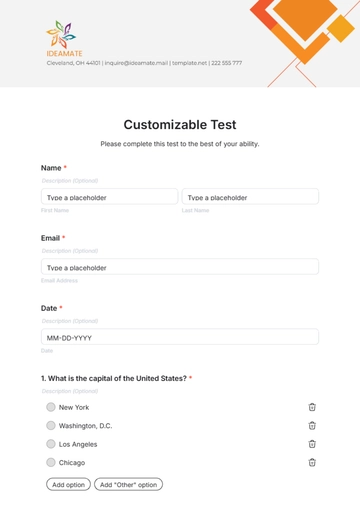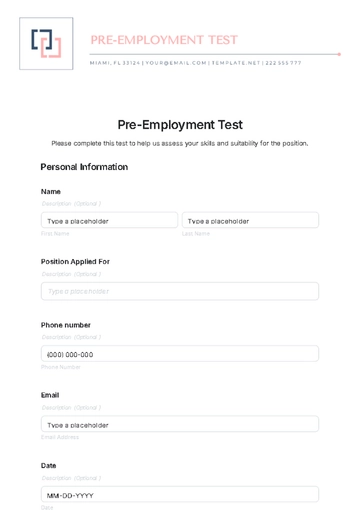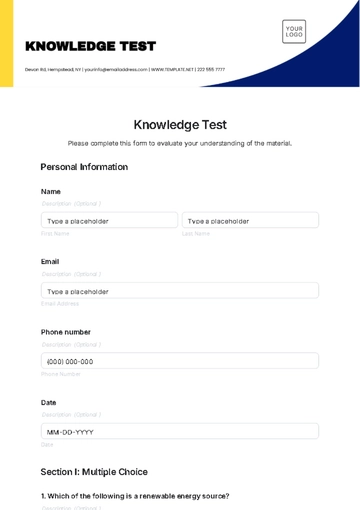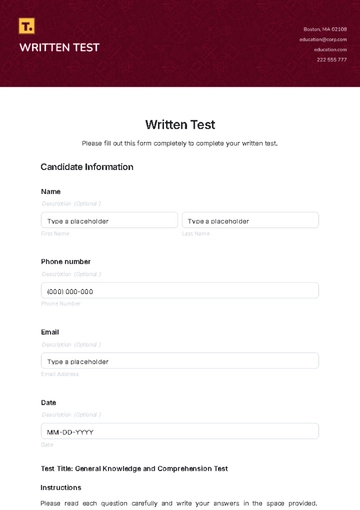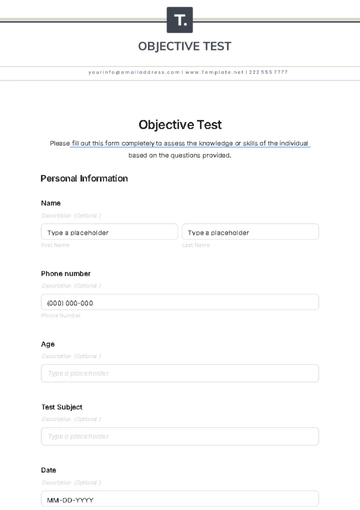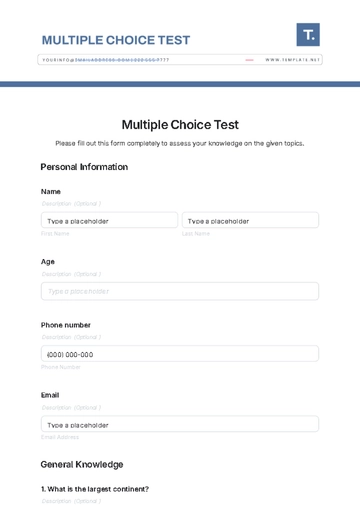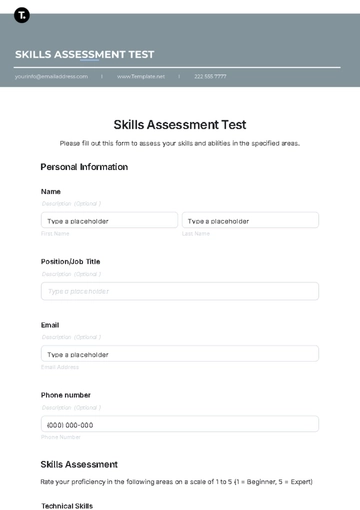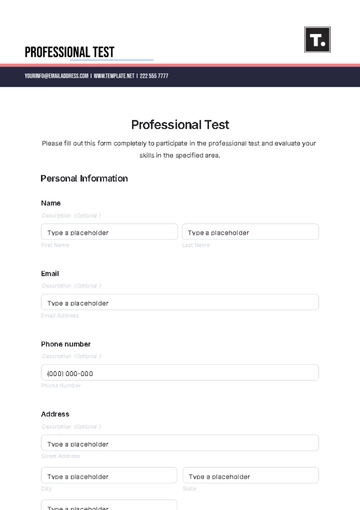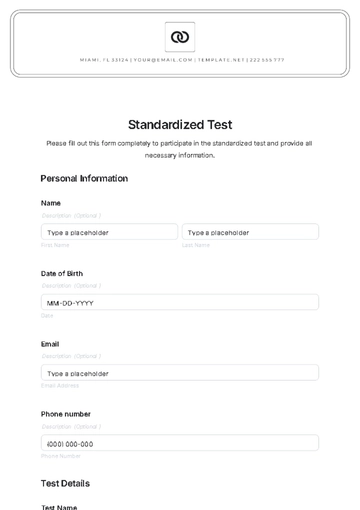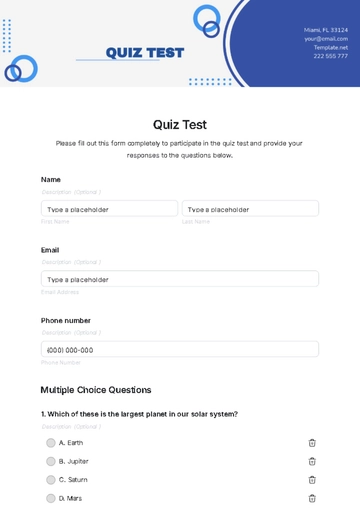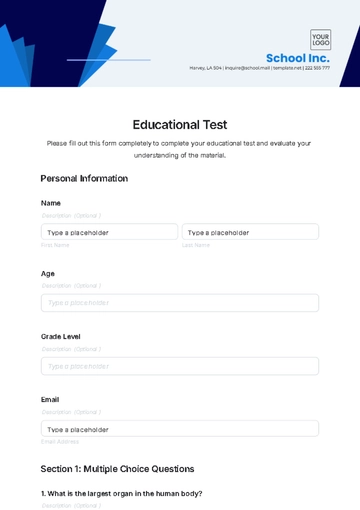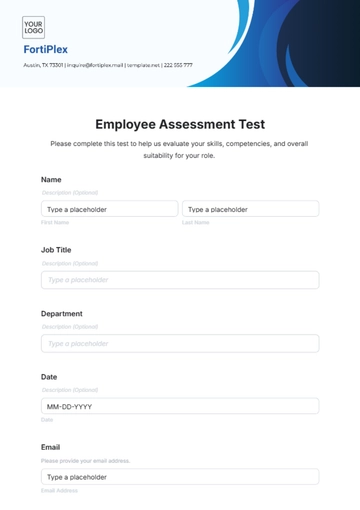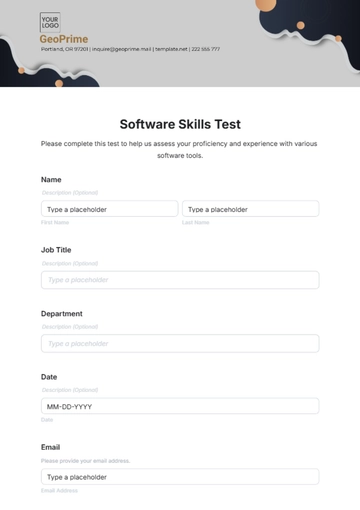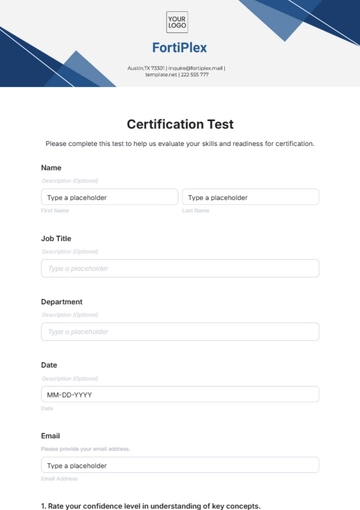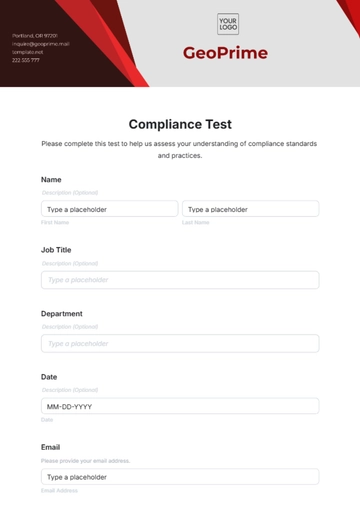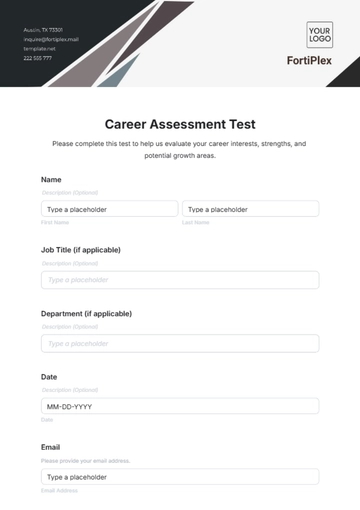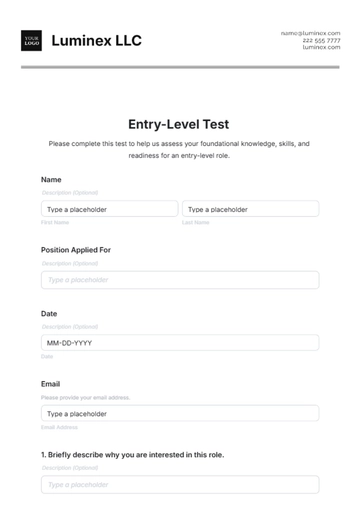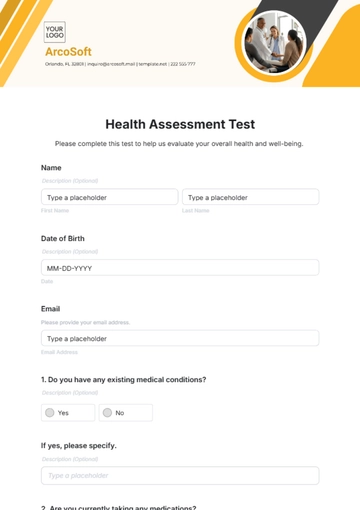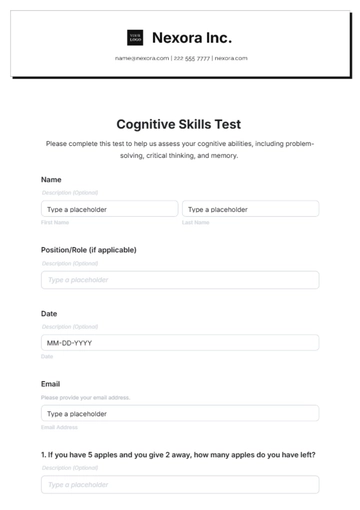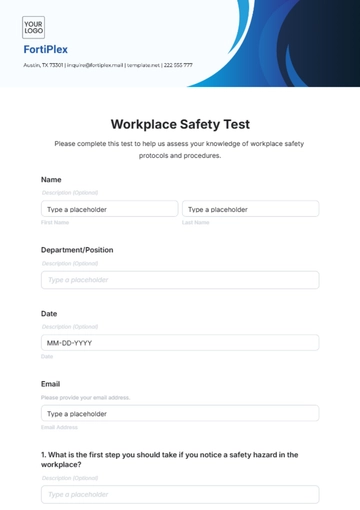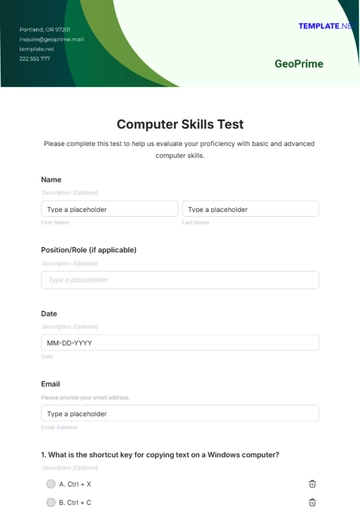Software Development Test Plan
Prepared by: | [Your Name] |
Company: | [Your Company Name] |
Department: | [Your Department] |
Date: | [Date] |
1. Introduction
This document outlines the test plan for the software development project. It defines the testing strategy, objectives, schedule, estimation, and deliverables for the testing phase.
2. Objectives
The primary objective of this test plan is to ensure that the software meets the required standards and functions as expected. This includes identifying and fixing defects, verifying that requirements are met, and improving the overall quality of the product.
3. Scope
The testing will cover all functional and non-functional requirements, including performance, security, and usability testing. Specific areas in scope include:
4. Test Strategy
4.1 Types of Testing
The following types of testing will be performed:
Type | Description |
|---|
Functional Testing | Validates the software against functional requirements. |
Performance Testing | Assesses the speed, scalability, and stability of the application. |
Security Testing | Ensures that the application is protected against vulnerabilities. |
4.2 Test Tools
The following tools will be used to automate and manage the testing process:
5. Test Schedule
The testing phase is scheduled to start on [Start Date] and end on [End Date]. A detailed timeline will be provided to outline major testing activities.
6. Test Deliverables
The following deliverables will be provided at the end of the testing phase:
Test Plan Document
Test Cases
Test Scripts
Test Summary Report
Defect Report
7. Environment Requirements
The testing will be conducted in a controlled environment that mirrors the production environment as closely as possible. The requirements include:
Operating System: Windows 10, macOS
Browsers: Chrome, Firefox, Safari
Database: MySQL
8. Resources
The testing team will consist of qualified test engineers experienced in the necessary testing techniques. Additional support from developers and project managers will be available as required.
9. Risk Management
Potential risks include resource availability, changes in requirements, and environmental issues. Each risk will be assessed for its impact and likelihood, and a mitigation plan will be developed.
Plan Templates @ Template.net
